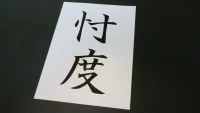What are intransitive and transitive verbs in Japanese? Explaining the differences and how to distinguish between them for foreigners.

Japanese automatic and transitive verbs are a little different from English in some respects, which may be difficult for non-Japanese speakers. This article explains the differences and how to distinguish between Japanese intransitive and transitive verbs.
▼Goandup Picks Click here for recommended articles!
- Required before studying abroad! Goandup Nihongo+, an online Japanese language learning service
- This page introduces services for foreigners who wish to study in Japan or improve their Japanese language skills to learn Japanese online.
- Goandup Salon" community for foreigners living in Japan
- We introduce an online community where foreigners living in Japan can exchange information and interact with each other to support their life in Japan.
- Goandup Study" supports foreigners who want to study in Japan.
- This section introduces study abroad support services that provide comprehensive support to foreigners who wish to study in Japan, from preparation for study abroad to living in Japan.
- Where can I buy a prepaid SIM in Japan? Recommended SIM cards for foreigners are also introduced.
- How to purchase a prepaid SIM and suitable SIM cards for foreigners.
- The Complete Guide to Pocket Wi-Fi in Japan for Foreigners!
- We introduce how to select and recommend pocket Wi-Fi products that can be used conveniently in Japan.
- The Complete Guide to Finding a Job in Japan! Finding a job, changing jobs, and part-time work for foreigners
- This site provides foreigners who want to work in Japan with comprehensive information on how to find a job, recommended job sites, and other information necessary to find a job.
What are intransitive and transitive verbs in Japanese?

First, a brief explanation of what is an intransitive and transitive verb in Japanese.
What is an intransitive verb in Japanese?
What is a transitive verb?A verb that describes an action that does not affect anything other than the person who is performing the action.For example, the verb 'walk' is an intransitive verb because it does not directly affect anything other than the person walking.
What is Japanese transitive verb?
What is a transitive verb?A verb that describes an action affecting something other than the doer.For example, the verb 'eat' is a transitive verb because it involves an action affecting something else (in this case, 'food'), resulting in the consumption or loss of food.
Source:Japanese Grammar|Verbs (9)Automatic and transitive verbs
What are some of the intransitive and transitive verbs in Japanese?

There are three patterns of verbs: verbs with both intransitive and transitive verbs, verbs with only automatic verbs, and verbs with only transitive verbs. Here are the main verbs in each pattern.
1. Verbs with both intransitive and transitive verbs
Verbs that are both intransitive and transitive include "be opened (be opened), open" and "fall (fall), drop (drop)". When translated into English, some can be written with the same English word, such as "be opened, open," while others become separate English words, such as "fall, drop.
Examples of verbs that are both intransitive and transitive.
| intransitive verb (no direct obj.) | transitive verb (direct obj.) |
| be opened | open |
| Be closed | close |
| Fall | drop |
| Enter | insert |
| come out | Take out |
2. Verbs that are only intransitive
Verbs such as "walk" and "run" have no corresponding transitive verb, only intransitive verbs. For example, "walk" does not have a verb that corresponds to "open" for "open".
[Examples of verbs that only have an intransitive verb
- Walking, running, going, working, living, crying, swimming, getting up, being, glowing
3. Verbs with only transitive verbs
Eating" and "drinking" are verbs that have no corresponding intransitive verbs, only transitive verbs. Since eating always results in the loss or diminution of food, it is not possible for only oneself to perform the action of "eating" and have no effect on anything else at all. Therefore, there is no corresponding intransitive verb for "eat.
[Examples of verbs that only have transitive verbs
- Eat, drink, read, write, buy, make, put, break, send, photograph, decorate
Source:Japanese Grammar|Verbs (9)Automatic and transitive verbs
How to distinguish between intransitive and transitive verbs

There is no easy way to clearly distinguish 100% between intransitive and transitive verbs, since some are exceptional or ambiguous. However, you can usually distinguish most of them by examining 1. whether or not "to" is added, and 2. whether or not a passive sentence can be formed.
1. if there is "to", it is often a transitive verb
Since transitive verbs affect something else, we can use "to" to describe something that is affected by them. For example, "open" and "eat" are transitive verbs because they can be written as "open the door" and "eat rice," respectively.
Note that there are exceptions!
Verbs that express movement (transitive verbs) may be used to indicate places such as the starting point of movement or a point of passage with "to". For example, they can be used as in "leave the room." However, these verbs do not affect anything else; they only indicate the route or extent of movement. Therefore, it is important to understand that these are automatic verbs, not transitive verbs.
Examples of transitive verbs with "to"]
- Departing, leaving, taking off, disembarking (starting point)
- Walking, running, passing, flying, strolling (passages)
This distinction is useful, but note that there are exceptions to the above. For example, "walk" is an automatic verb, but you can add "to" as in "walk along a road". However, in this case "along a road" describes the situation in which I am walking (along a road), and considering that walking does not have any effect on the road, we can determine that this is an automatic verb.
2. If you can make a passive sentence, it is a transitive verb, if not, it is an intransitive verb.
Since transitive verbs have "something" that is affected by their movement, we can make a passive sentence with that "something" as the subject. For example, "I open the door" can make a passive sentence "The door is opened by me," so we know it is a transitive verb. On the other hand, "The door opens" is an intransitive verb, because there is nothing that can be the subject of a passive sentence to make a passive sentence.
Japanese example sentences with intransitive and transitive verbs

Here are some simple example sentences in Japanese using both intransitive and transitive verbs.
The intransitive door opened.
"The intransitive door opened." is an example sentence using the verb "open," which is both an intransitive and transitive verb.
It means that the action is performed spontaneously or by some internal mechanism or force of nature. In this sentence, it indicates that the door opened by itself, not by someone else.
I opened the door.
"I opened the door." is an example sentence using the transitive verb "open," which is both an intransitive and transitive verb.
It indicates that the actor (in this case, "I") has performed some action on the object (in this case, the door). In this sentence, the act of opening the door is represented by a transitive verb.
I walked to the station.
"I walked to the station." is an example sentence using the intransitive verb "walk" without a transitive verb.
In the sentence "I" expresses the action of "I" walking to the station as an active action of the self, but it does not act directly on the object. Therefore, this verb is treated as an automatic verb.
I ate breakfast.
"I ate breakfast." is an example sentence using the transitive verb "eat" without an intransitive verb.
The verb "eat" has the characteristics of a transitive verb, as it expresses an action performed by the subject "I" on the object of breakfast, and the object of breakfast is eaten.
Serious employment support to help you realize your dream of working in Japan!

Do you want to work in Japan?
Let us "Goandup" make that dream a reality!
【 Program Features 】
✅ JLPT N3 level Japanese language acquisition
✅ Thorough preparation for the specific skills test
✅ Full support for job hunting in Japan
Business-focused one-on-one lessons will help you find a job in Japan in the shortest possible time.
【 Program Menu 】
- Individual Japanese language lessons
- Intensive curriculum to obtain N3, especially specialized lessons for business Japanese that can be used at work.
- Intensive curriculum to obtain N3, especially specialized lessons for business Japanese that can be used at work.
- Preparation for the Specific Skills Test
- Customized materials for specific skill tests will be used to focus on frequently asked questions and learning to pass the test.
- Customized materials for specific skill tests will be used to focus on frequently asked questions and learning to pass the test.
- Resume and CV support
- To create resumes and CVs tailored to Japanese corporate culture, and to brush up on self-promotion and motivation for application.
- To create resumes and CVs tailored to Japanese corporate culture, and to brush up on self-promotion and motivation for application.
- Interview Preparation
- Guidance on areas for improvement through mock interviews and feedback based on corporate interview scenarios. Learn interview etiquette and behavior unique to Japan.
- Guidance on areas for improvement through mock interviews and feedback based on corporate interview scenarios. Learn interview etiquette and behavior unique to Japan.
- career consulting
- Provide introductions to companies that match the participant's career goals, select companies to apply to, and provide advice on the level of knowledge required by the companies to which the participant is applying.
- Provide introductions to companies that match the participant's career goals, select companies to apply to, and provide advice on the level of knowledge required by the companies to which the participant is applying.
- Chat Support
- In addition to one-on-one individual lessons, we also accept casual questions via DM (visa application, living support, assistance in finding a room, etc.).
If you are serious about your career in Japan, join us now!
▶︎ for more informationclick here.
We will do our best to support your success in Japan!
summary
Japanese intransitive and transitive verbs are difficult for foreigners, but you can distinguish them by thinking about something that affects someone other than yourself, adding "~" or making passive sentences. Master Japanese intransitive and transitive verbs so that you can use good Japanese.
This article is also recommended ▼
Potential Forms (Potential Forms in Japanese) are explained in an easy-to-understand manner!
Your support will help us!
Thank you for visiting Goandup Picks. Our mission is to provide you with more useful information to show the world what Japan has to offer.
Your support will help us to further enhance our activities, so please support us!





